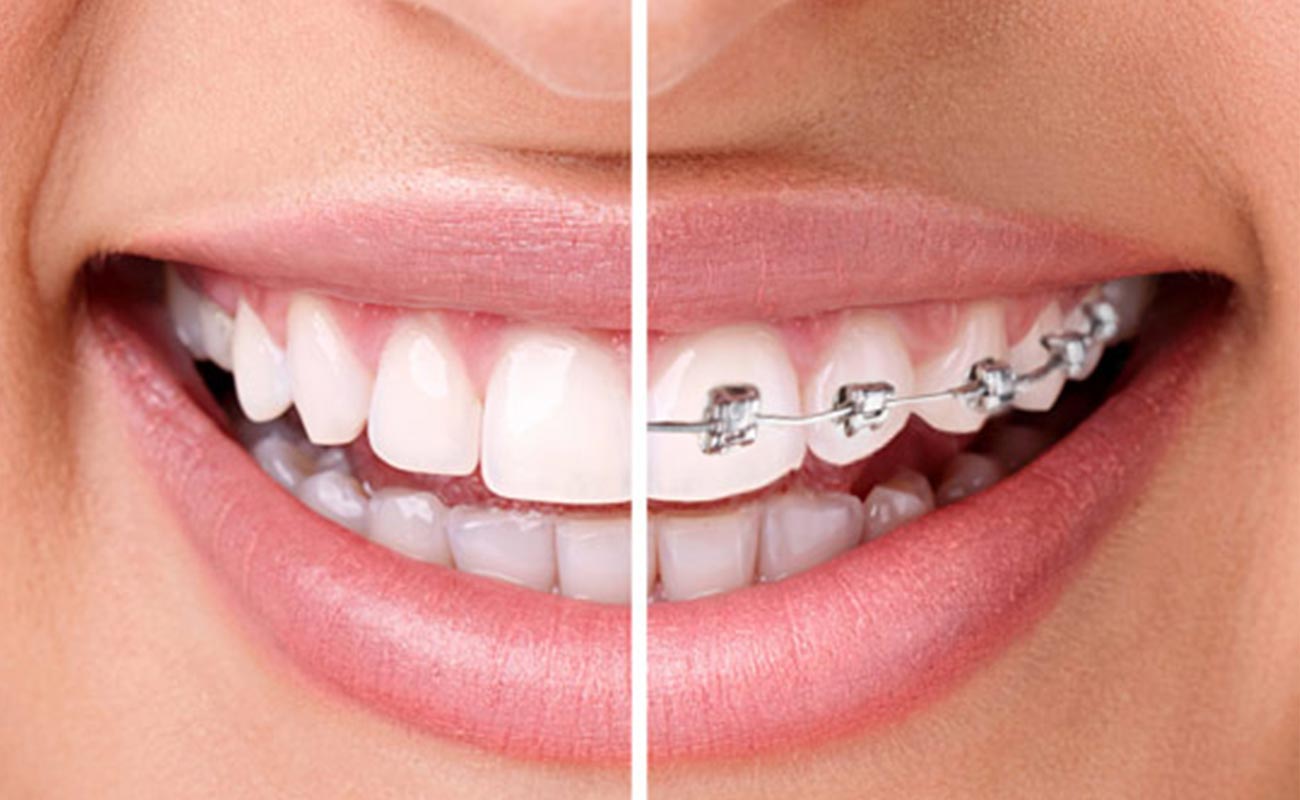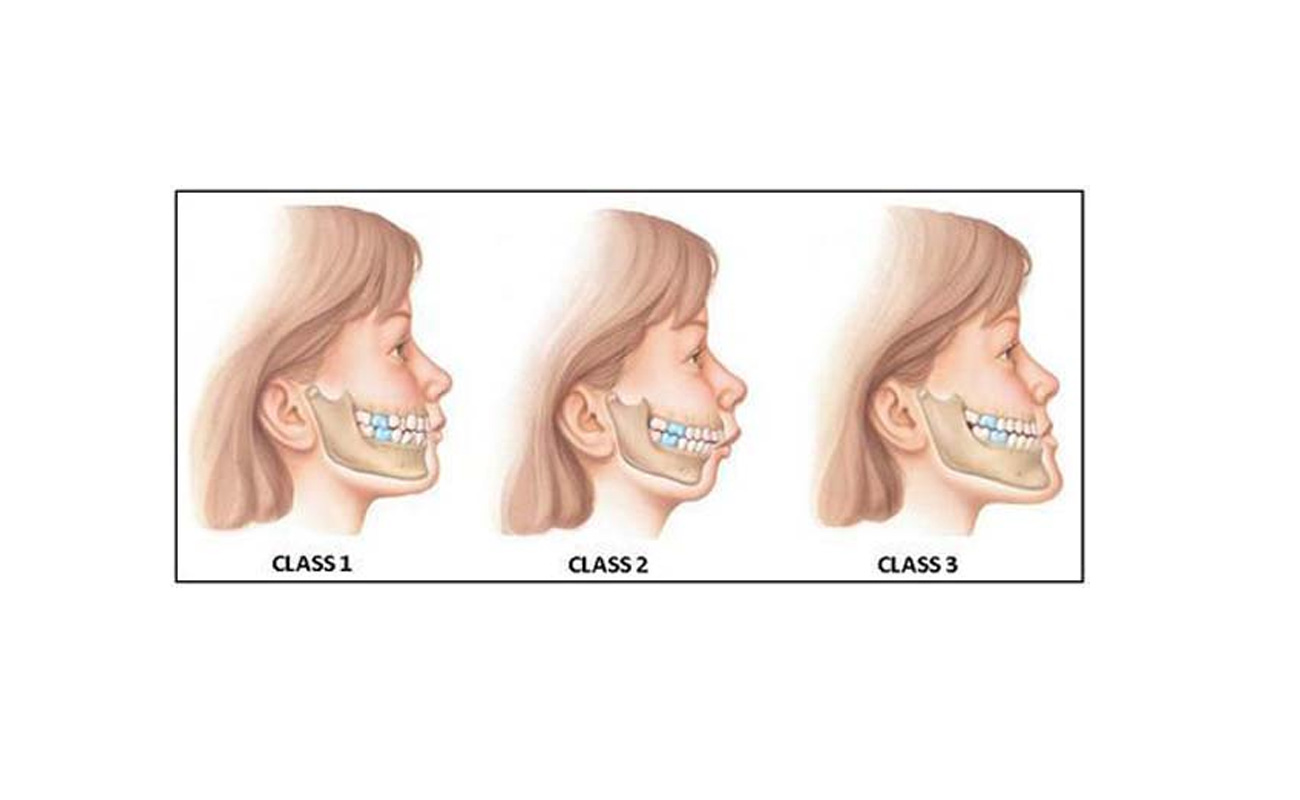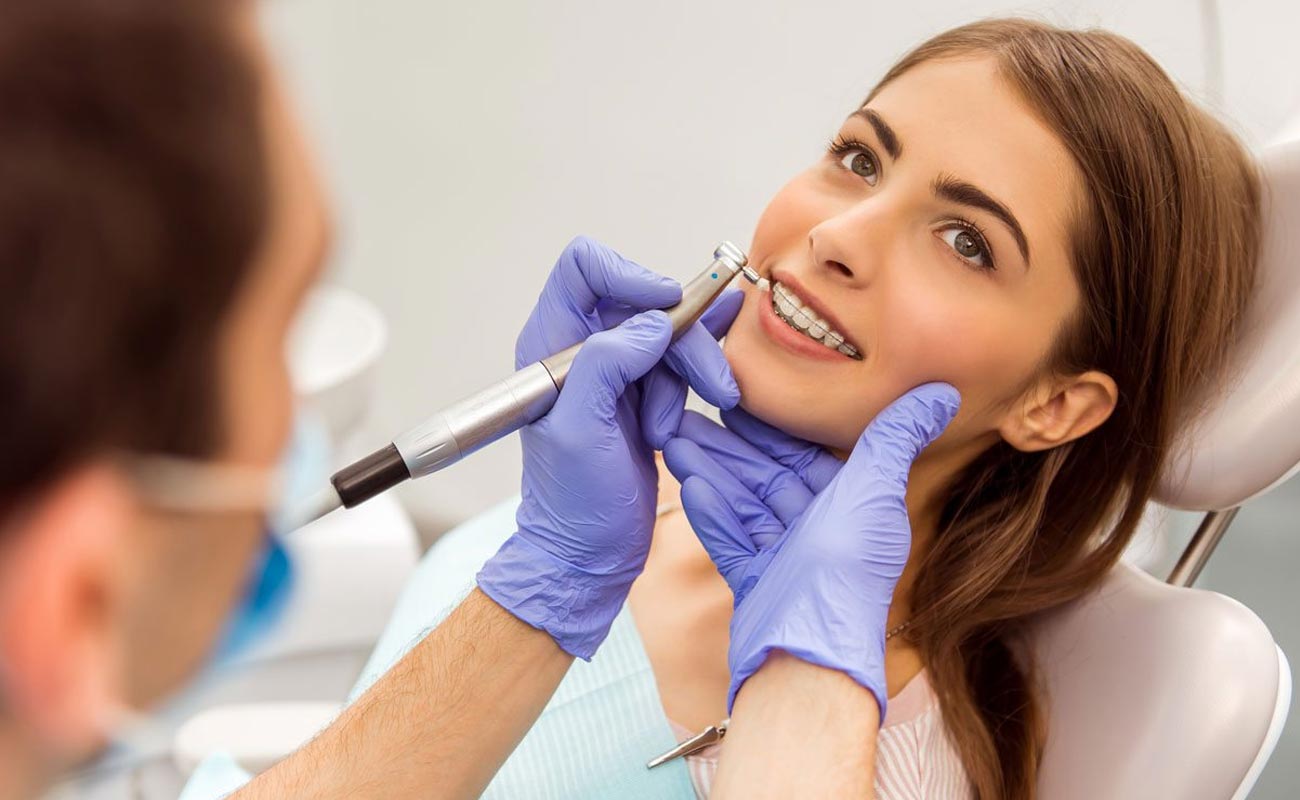A malocclusion is a misalignment or incorrect relation between the teeth of the two opposing dental arches when they come together as the jaws are closed. The term “malocclusion” was first used by Edward Angle, the man known as “the father of modern orthodontics”. Angle came up with the word by taking the word occlusion (which literally means “the position of the teeth when the jaws are closed”) and adding the prefix mal (which is defined as “in a faulty manner”).

Mal + occlusion = faulty occlusion or incorrect occlusion, which perfectly describes a dental misalignment or other dental complication.
Malocclusion is usually an inherited condition. This means it can be passed down from one generation to the next.
There are some conditions or habits that may change the shape and structure of the jaw. These include:
Depending on the classification of malocclusion, the symptoms of the disorder may be subtle or severe. Typical symptoms of malocclusion include:
A dentist usually checks for malocclusion in children during regular dental visits. If the jaw or teeth are out of line, the dentist may suggest a visit to an orthodontist. The American Association of Orthodontists recommends that all children get a checkup with an orthodontist by age 7.
An orthodontist will:
Start taking your child for dental checkups at 12 months of age, and get checkups done 2 times a year. This will help the dentist find any problems early. It will also help your child get used to seeing a dentist.
Class 1 malocclusion is diagnosed when the upper teeth overlap the lower teeth. In this type of malocclusion, the bite is normal and the overlap is slight. Class 1 malocclusion is the most common classification of malocclusion.
Class 2 malocclusion is diagnosed when a severe overbite is present. This condition, known as retrognathism (or retrognathia), means that the upper teeth and jaw significantly overlap the lower jaw and teeth.
Class 3 malocclusion is also diagnosed when there’s a severe underbite. This condition, known as prognathism, means that the lower jaw protrudes forward. This causes the lower teeth to overlap the upper teeth and jaw.

Very few people have perfect teeth alignment. However, most problems are so minor that they do not require treatment.
Malocclusion is the most common reason for referral to an orthodontist.
By treating moderate or severe malocclusion, the teeth are easier to clean and there is less risk of tooth decay and periodontal diseases (gingivitis or periodontitis). Treatment eliminates strain on the teeth, jaws, and muscles, which lessens the risk of breaking a tooth and may reduce symptoms of temporomandibular joint disorders.
The goal is to correct the positioning of the teeth. Braces or other appliances may be used. Metal bands are placed around some teeth, or metal, ceramic, or plastic bonds are attached to the surface of the teeth. Wires or springs apply force to the teeth.
One or more teeth may need to be removed if overcrowding is part of the problem. Rough or irregular teeth may be adjusted down, reshaped, and bonded or capped. Misshapen restorations and dental appliances should be repaired. Surgery may be required on rare occasions. This may include surgical reshaping to lengthen or shorten the jaw (orthognathic surgery). Wires, plates, or screws may be used to stabilize the jaw bone. Clear braces (aligners) without wires may be used in some patients.
It is important to brush and floss your teeth every day and have regular visits to a general dentist. Plaque accumulates on braces and may permanently mark teeth or cause tooth decay if not properly cared for.
You may need a retainer to stabilize your teeth after having braces. 
Many types of malocclusion are not preventable. Control of habits such as thumb sucking may be necessary in some cases. However, early detection and treatment may optimize the time and method of treatment needed.
Braces —An orthodontic appliance consisting of brackets cemented to the surface of each tooth and wires of stainless steel or nickel titanium alloy. Braces are used to treat malocclusion by changing the position of the teeth.
Impression —In dentistry, an imprint of the upper or lower teeth made in a pliable material that sets. When this material has hardened, it may be filled with plaster, plastic, or artificial stone to make an exact model of the teeth.
Occlusion —The way upper and lower teeth fit together during biting and chewing. Also refers to the blockage of some area or channel of the body.
Retainer —An orthodontic appliance that is worn to stabilize teeth in a new position.
Space maintainer —An orthodontic appliance that is worn to prevent adjacent teeth from moving into the space left by an unerupted or prematurely lost tooth.
Orthodontic treatment is the only effective treatment for malocclusion not requiring surgery. However, depending on the cause and severity of the condition, an orthodontist may be able to suggest other appliances as alternatives to braces. If the malocclusion is thought to be caused by the child sucking on fingers or a pacifier and the child is stopped early enough, the malocclusion may resolve spontaneously without treatment.

Orthodontic treatment often takes about 2 years, but it can take longer than planned. Treatment usually takes longer for an adult than for a child. Ask your dentist how long treatment may last for you.
If your orthodontist says you need surgery for a jaw problem, think about getting a second opinion from another oral surgeon or orthodontist. This can give you more information and help you make a decision that feels right for you.
Braces and other types of orthodontic treatment cost a lot. Many dental insurance plans will cover some of the cost. Before you start treatment, make sure you know how much it will cost and how you will pay for it. Ask if your orthodontist offers a payment plan that can help you fit the expense into your budget.
Ireland, Anthony J., and Fraser McDonald. The Orthodontic Patient: Treatment and Biomechanics. New York: Oxford University Press, 2003.
Sutton, Amy L., ed. Dental Care and Oral Health Sourcebook: Basic Consumer Health Info, 2nd ed. Detroit, MI: Omnigraphics, 2003.
Takada, K., and W. R. Proffit. Orthodontics in the 21st Century: Where Are We Now? Where Are We Going? Osaka, Japan: Osaka University Press, 2002.
Van der Linden, Frans P. G. M. Orthodontic Concepts and Strategies. Chicago: Quintessence Publishing, 2004.
About Orthodontics." American Association of Orthodontists, 2004. Available online at <www.braces.org/braces/about/faq/faq_concerns.cfm> (accessed November 21, 2004).
"Early Orthodontic Care." American Academy of Pediatric Dentistry. Available online at <www.aapd.org/publications/brochures/content/earlyortho.html> (accessed November 21, 2004).
"Facts about Orthodontics." American Association of Orthodontists. Available online at <www.braces.org/about/faq/faq_background.cfm> (accessed November 21, 2004).
"Frequently Asked Questions: Braces and Orthodontics." American Dental Association. Available online at <www.ada.org/public/topics/braces_faq.asp> (accessed November 21, 2004).
Paladin, Pam. "Braced for a Century." American Association of Orthodontists. Available online at <www.braces.org/history/index.cfm> (accessed November 21, 2004).
"Problems to Watch for in Growing Children." American Association of Orthodontists. Available online at <www.braces.org/aaortho/braces/about/problems-to-watch-for.cfm> (accessed November 21, 2004).
Margaret Alic, PhD
webmd.com, healthline.com, encyclopedia.com/medicine, orchardscottsdental.com.
Submit Comment